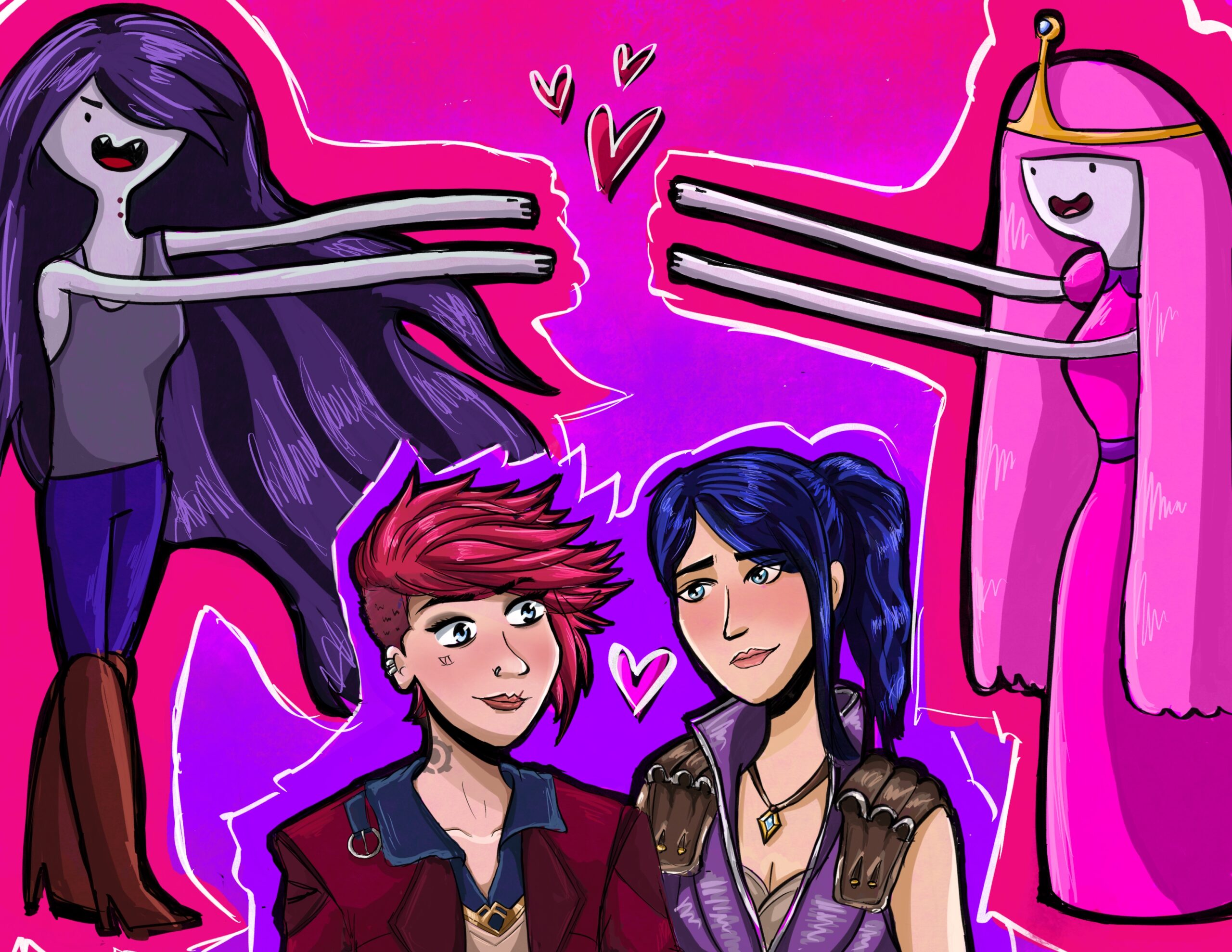The rise of quiet queerness in animation
“In the animated world, there is no default setting.”
According to Ofcom, by the time children reach the age of four, they already average 12.7 hours of TV in a week. That is a lot of time spent consuming content that will essentially shape the way they view the world. Young children are impressionable, and the type of media they consume plays a crucial role in the kind of habits and traits they exhibit. One reason why parents and teachers alike are so worried about what is running on cable TV is because they don’t want to accidentally expose these malleable minds to something that may do them more harm than good.
Similarly, the media young children consume is very important in terms of helping them learn what is “normal” and what is not. If done right, having queer representation in children’s television can help them view being queer as natural and not something to be penalised or treated differently for. This is monumental for young queer children, who may not know what being queer is, but may be wondering why they are experiencing feelings that “a boy is supposed to feel for a girl,” for their same gender friend instead. Seeing their identity validated in the world they wished was their own, in the characters they look up to, can have a strong, positive impact, and can help them feel like they are not alone. This is one of the reasons why having queer representation in animated television is so important, with most animated media tailored towards younger audiences. And if you look around, you’ll see no shortage of queer representation in animation. But what makes this representation different from live action television?
Although there are some traditional TV shows and movies that do queer representation well, without perpetuating harmful stereotypes or killing off their gay characters, they tend to solely revolve around being queer. Now, I don’t think this is necessarily bad. In fact, I think it is very much needed. I do think, however, there is a unique charm associated with media where being queer is not the focus of the show. By this, I don’t mean having queer side characters. Instead I mean that even if the main character is queer, it isn’t their entire identity. Being queer is just one of their million traits but it isn’t the end all be all.
Representation in animation seems to be less surface level, featuring characters with tons of emotional depth and relatability, hitting the mark when it comes to complex characters. Unlike live action television, where a character’s gender and sexual identity are what makes them “unique,” in animated TV shows, these are just one of their many traits. The relevance to the plot extends beyond who they are attracted to.
To me, animation does a brilliant job at showcasing diversity. In the animated world, there is no default setting. There is no expectation to belong to a certain race, to speak a certain language, to look a certain way, or to have a certain kind of family. It is all deemed to be normal.
Take for example, the popular Netflix show, Arcane, based off the video game League of Legends. With its final season released towards the end of 2024, the show made major waves, gaining global recognition for its stunning visuals, fight sequences, soundtrack, and storyline—even bagging the 2022 Emmy Award for Outstanding Animated Program. Set in Riot Games’ League of Legends Universe, Arcane follows the story of two sisters, Vi and Jinx, who end up on opposing sides of a long overdue war between rival cities, Zaun and Piltover. Going off this synopsis, you would not immediately think that the show is a “queer show.” But as the series progresses, using subtext and contextual cues, Vi is shown to be a lesbian, and has some serious on-screen chemistry with Caitlyn, an Enforcer from Piltover (dubbed CaitVi). Their sexuality is never explicitly stated, nor a point of conflict throughout the show. Although their relationship plays a significant part of their storylines, shaping their trust, motivations, and emotional depth, the fact that they are queer is not treated as a defining or exceptional trait. Instead, we see their connection develop organically, reinforcing the idea that queerness is an inherent, unforced aspect of their identities rather than something that requires justification.
Adventure Time is another animated TV show I believe did LGBTQ+ representation right. This show follows the escapades of Finn, a human boy, and his adoptive brother, and partner-in-crime, Jake the dog, in the post-apocalyptic Land of Ooo. One of the most beloved queer relationships takes place between Princess Bubblegum and Marceline. Throughout the series, their romantic relationship was hinted at, but nothing was explicitly stated, until the later seasons, where their feelings were acknowledged. This slow-but-steady approach to their relationship, incorporated their love for each other into the animated world naturally and quietly, like it was nothing out of the ordinary.
The reason why more subtle queer representation is important, is because these shows can reach a multitude of audiences, who may not actively seek out LGBTQ+ narratives. Most viewers tune into shows like Arcane or Adventure Time for their gripping storyline, only to end up organically experiencing queer relationships as an integral part of the plot. This incidental exposure normalizes LGBTQ+ identities for a wider audience, promoting understanding and acceptance without feeling preachy or forced.
As media continues to evolve, it’s clear that animation has set a high bar for LGBTQ+ representation. Shows like Arcane and Adventure Time prove that subtlety doesn’t need to mean invisibility—it can mean authenticity. And in an era where representation is more important than ever, this quiet power may just be the most revolutionary approach of all.

